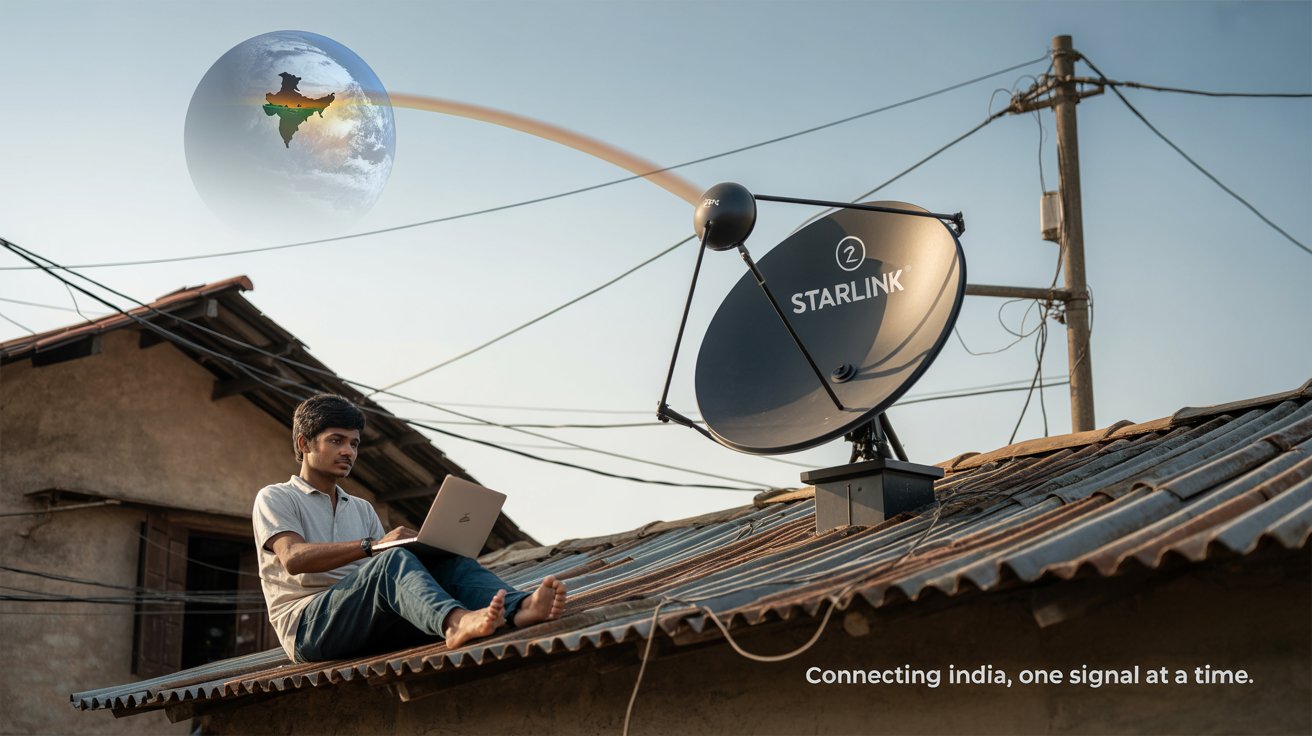Indian Government Caps Starlink Users at 2 Million, Imposes Speed Limit of 200 Mbps
Elon Musk’s satellite internet service Starlink has received conditional approval from the Indian government. In a significant move, the Ministry of Telecommunications has decided to permit Starlink to provide its services to a maximum of 20 lakh (2 million) users in India. Moreover, the internet speed offered will be capped at 200 Mbps, ensuring that the service doesn’t disrupt the balance of the current telecom ecosystem.
Focus on Rural India
Starlink’s services are primarily aimed at rural and remote areas in India — regions that have limited internet access and poor connectivity infrastructure. These areas are currently served by state-run BSNL, which holds a significant market share. Despite this, the government is confident that Starlink’s operations won’t negatively impact existing telecom players. The goal is to bridge the digital divide and provide high-speed internet to underserved populations.
However, access won’t come cheap. According to early estimates, customers may need to spend nearly ₹3,000 per month to enjoy Starlink’s high-speed satellite internet. This price point could limit adoption, especially among economically weaker sections.
BSNL 4G Rollout Completed
To maintain competitiveness, BSNL has reportedly completed its 4G service expansion across India. The telecom minister stated that there are no immediate plans to increase tariffs. “We aim to consolidate our market position first,” he said, indicating a strategy of maintaining affordable rates to attract more users.
Official License Granted
India’s national space promotion agency IN-SPACe has officially granted Starlink a five-year license to operate satellite-based internet services. This means Starlink can now deploy its Gen1 satellite constellation to offer internet coverage across India. What remains pending is spectrum pricing finalization and final approval from the Department of Telecommunications (DoT).
TRAI Proposes Revenue Sharing Model
To regulate this new sector, TRAI (Telecom Regulatory Authority of India) has proposed a new framework where companies like Starlink will be required to share 4% of their revenue with the government. This revenue-sharing model could result in an additional ₹500/year per user in urban areas. Interestingly, rural subscribers are exempt from this extra cost, making the services more accessible to them.
Balancing Innovation and Fair Competition
This strategic move reflects India’s dual objective: promote cutting-edge satellite technology while safeguarding domestic telecom players from undue competition. By placing user caps and speed restrictions, the government is signaling its commitment to both digital inclusion and market stability.
Starlink is now gearing up to reshape India’s broadband landscape, but it will do so under clear regulatory supervision — a win-win for innovation and public interest.
